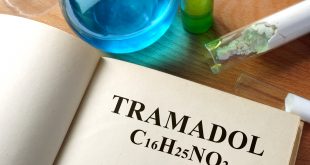- Basic ion exchange resins, supplied in chloride form. They are neither digested nor absorbed and basically decrease LDL levels. This reduction is around 20-25%.
- Have little effects on TGs and HDL. Effect is apparent within 3-5 days. Peak effect is visible in 2 weeks.
- Normally bile acids are absorbed in jejunum, where they exert negative feedback and prevent conversion of cholesterol into bile acids.
- When bile acid binding resins are used, they bind bile acids and increase excretion of bile acids. No negative feedback occurs, and more conversion of cholesterol into bile acids takes place.
- There is compensatory increase in LDL receptors in liver.
- There is more extraction of LDL from plasma.
- Clearance of IDL, LDL & indirectly VLDL is raised.
Rationale of combining resins and statins
When resins are administered, compensatory increase in cholesterol synthesis occurs (due to decreased cholesterol stores), increasing HMG CoA reductase activity, leading to increased cholesterol synthesis. So HMG CoA reductase inhibitors are also administered.
Adverse effects
1. GIT –abdominal discomfort and constipation (due to increased water intake)
Bloating and dyspepsia (heart burns). Remedy is refrigeration of drug and suspending the drug in liquid medium (evening drug should be suspended in morning)
2. Can aggravate hemorrhoids, relieved by taking dietary fibers
3. Can produce hypochloremic acidosis as bind chloride ions
4. Can produce hypoprothrombonemia (increased bleeding tendency) due to malabsorption of vitamin K.
5. Interfere with absorption of fat soluble vitamins.
6. Can interfere with absorption of lipids, producing steatorrhoea. Common in patients of cholestais and inflammatory bowel disease
7. Interfere with absorption of various drugs like Digoxin, thyroxine, thiazide diuretics, tetracycylines, warfarin and aspirin.
8. Interfere with absorption of folic acid
9. Cholelithiasis –increased cholesterol content of bile.
Uses
1. Primary hypercholesterolemias
2. Pruritis –due to choliestasis or due to bile salts accumulation
3. Digitalis toxicity as bind Digitalis
Contraindications
1. Pregnancy
2. Patients of hemorrhoids
Dose
Available in form of powders, in packets. Dose is 16-36 g/day. Should not be taken in dry form. Taken with meal.
Continue Reading
Cholesterol Absorption Inhibitors, Fish Oils and Orlistat
 howMed Know Yourself
howMed Know Yourself




